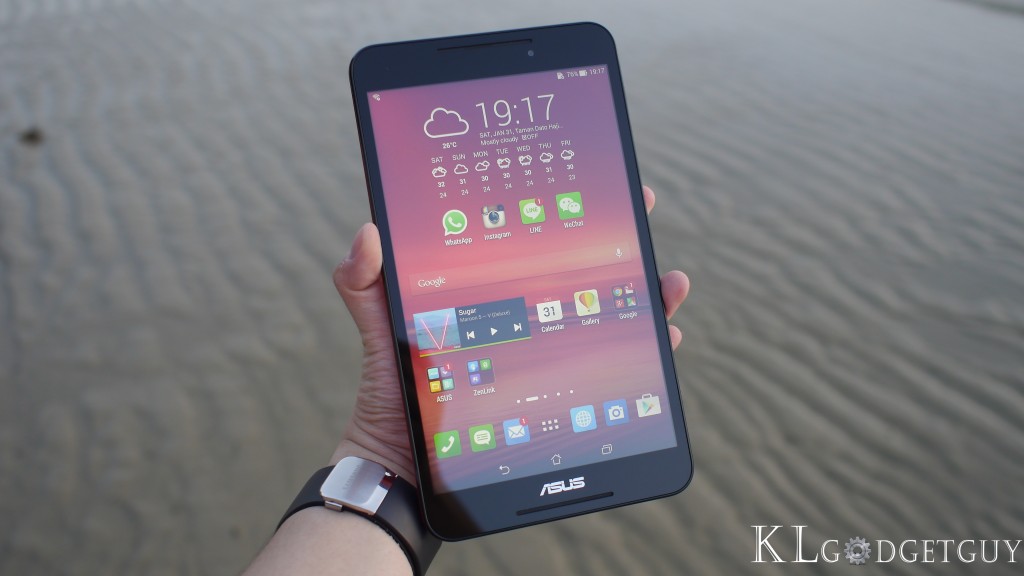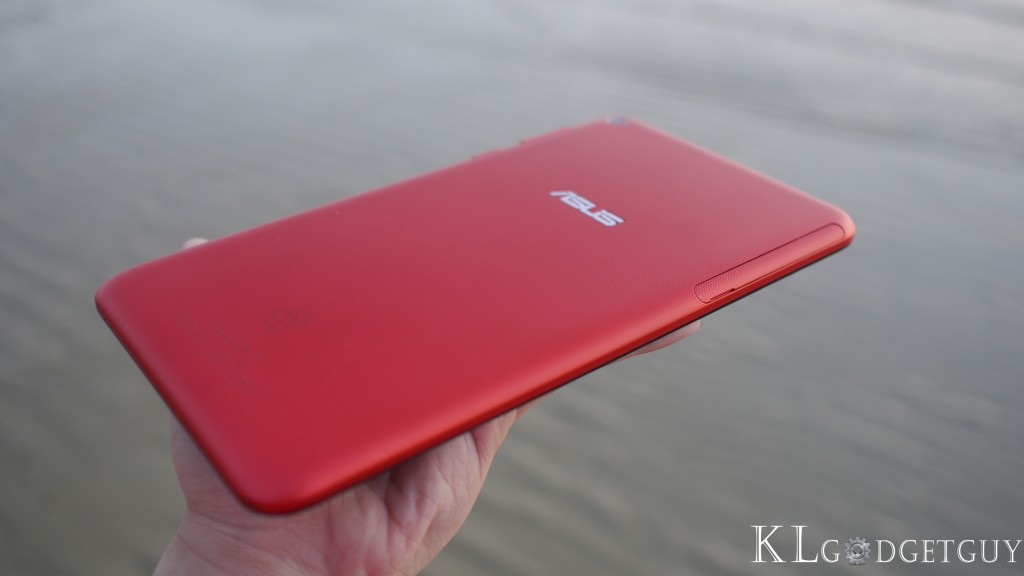You are probably as sick as us looking at the war of smartphones today, as there are more players in the game bringing on the slimmest form factor and the most number of CPU cores on it, however none of them has actually thought of revolutionizing the large phablet market once again. Of course, I’m not suggesting that there’s a revolutionary phablet at this time, but someone really needs to revisit this particular market segment once again and ASUS is just the company that has decided to look upon the large phablet category once again with the Fonepad 8.
ASUS FonePad 8 Hardware Specifications
Processor: Intel Atom Z3530 64-bit 1.3GHz Quad-Core
RAM/ROM: 1GB/8GB expandable up to 64GB
Display: 8″ 1280×800 IPS
Camera: 5MP Autofocus (Main), 2MP (Front)
Connectivity: WiFi 802.11 b/g/n, BT 4.0, NFC
Networks: Dual SIM standby, DC-HSPA+/GSM
Battery: 4000mAh
Redefining a large phablet design
We’ve always complained that 8-inch phablets don’t really fit well into our pockets and therefore we’ve always opted for a 7-inchphablet if we ever need one, however some people may find that the latter to be too small for reading and that’s why here is why ASUS has come to the rescue.
The FonePad 8 is an 8-inch phablet measuring at 8.9mm thin and has pretty slim screen bezels that gives it a mere width of 120mm, the device also weighs a mere 310g which is extremely light for a huge slate. ASUS not only had the FonePad 8 slimmed down but it also introduce the familiar rough texture material that we’ve come to loved once on the entry level FonePad 7 FE170CG.
Apart from having a fresh and sleek design, ASUS has decided to include a pair of front firing speakers instead of maintaining a single one, which outputs excellent sound quality and very much surpasses HTC’s own BoomSound speakers (no kidding!), it’s a perfect device for listening your favorite music and watching your Hollywood blockbusters with that clear, realistic sound output.
To my surprise, the FonePad 8 actually fits into my pockets, not that it is the most comfortable experience when I sat down it it, but walking with a huge slate seems to be fine in my case. However when the phablet starts ringing on phone calls and notifications, I did struggle trying to get that huge slate out of my pockets so its best that you carry a handbag along with you or simply pair it with a Bluetooth smartwatch/headset if you ever wanted to know what events are happening on the device.
While not truly revolutionary, the FonePad 8 marks a start for ASUS on redefining a large phablet design, at least while others are still focused on making smartphones, ASUS hasn’t gave up on the phablet consumer category.
Display
Since the FonePad 8 is still marketed as an affordable phablet, ASUS has obviously maintained a common but still good 1280×800 resolution display and to be frank, we dearly wished that ASUS could include a Full HD display and won’t even mind if the tablet’s cost increase by a little. With that said, the phablet’s display is still good with vibrant color reproduction and good viewing angles, screen sensitivity is good with 10 multi-touch points.
Screen brightness however isn’t great at outdoors, making it a less productive device if you’re always having coffee outside with the device outside the house, however you’d be happy that it will work well in reading e-books and webpages, thanks to the device’s reading mode that tends to reduce Blue Light and soothes your eyes in low room light.
Zen UI is great as usual
While we have virtually no complaints of ASUS’ Zen UI and its features, performance used to be an issue on some devices with 1GB RAM and sadly on the FonePad 8 this time, the RAM barely managed to keep itself free from its heavy processes, apps can crash at times and even freezes can happen to the device if you’ve exhausted the RAM, its really a shame while Intel’s 64-bit processor begins to show some slight performance over the company’s predecessors and most importantly, graphics performance have improved significantly on games with the new PowerVR Series 6 GPU onboard.
Zen UI, is one of the best launchers on a tablet device and ASUS hasn’t done any changes to the user experience, you still get the set of beautiful wallpapers, clean and flat looking app icons, consistent color schemes on default apps, and productive features such as What’s Next and Do It Later, all of these things made a lot of sense on a device meant for productivity purposes.
Even though Android 4.4 KitKat still comes preloaded on the device, we believe the device should get a taste of Lollipop very soon given that it comes with 64-bit hardware, but then we shall see if the new Android version will actually solve its RAM issue. Worried about that 8GB internal storage? You’d be happy to know that ASUS has allowed most apps to be moved to the SD cardso make you purchase one as well.
Camera
We haven’t been really impressed with the camera of the Fonepad series as we may assume that the company thinks nobody would want to take pictures with a phablet. However in this case, camera modules are getting cheaper by the day and most people won’t actually mind holding a huge tablet for taking pictures, the lack of a good camera sensor is really unfortunate and the Fonepad 8’s camera sadly doesn’t deliver the best imaging results.






